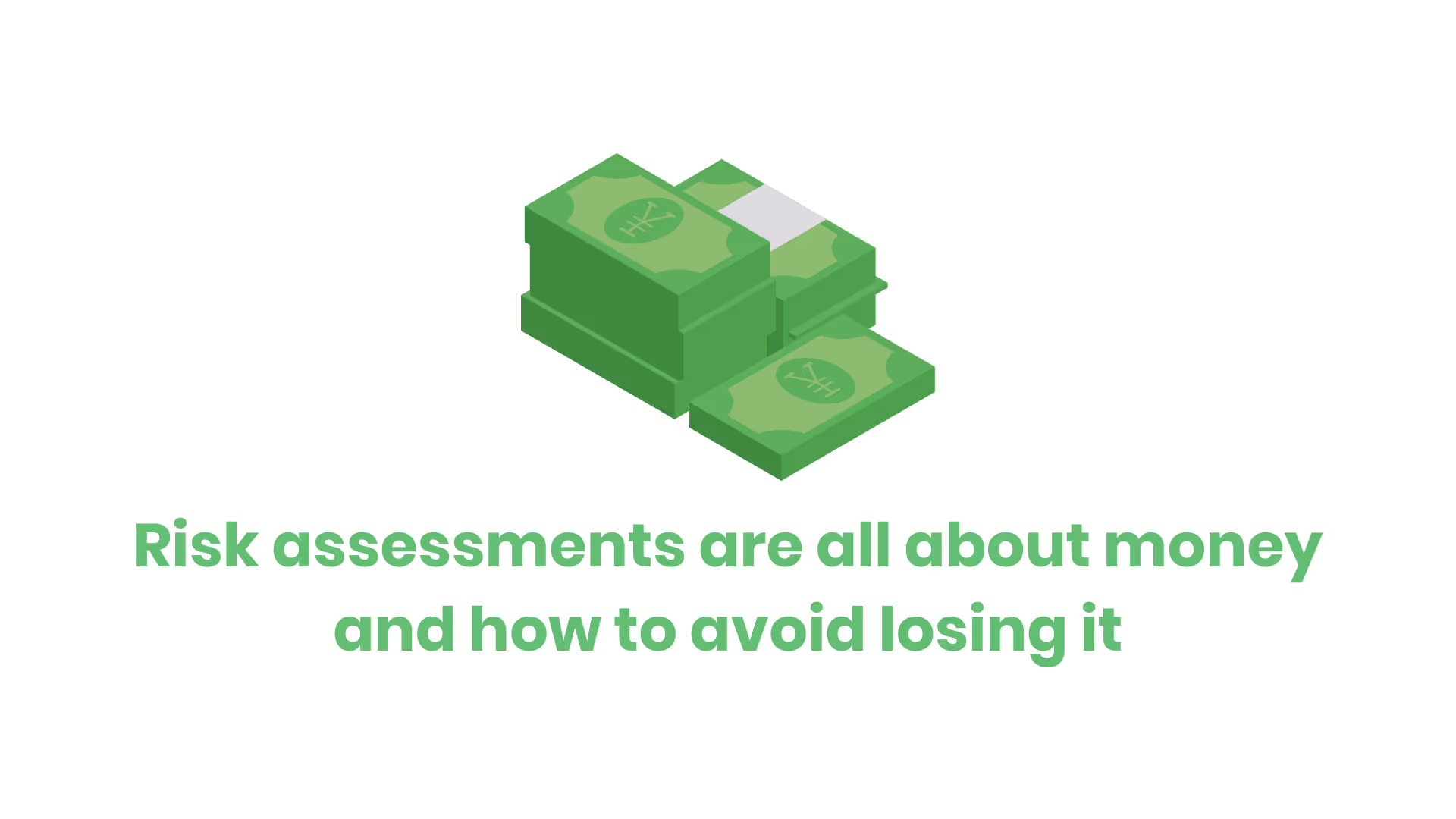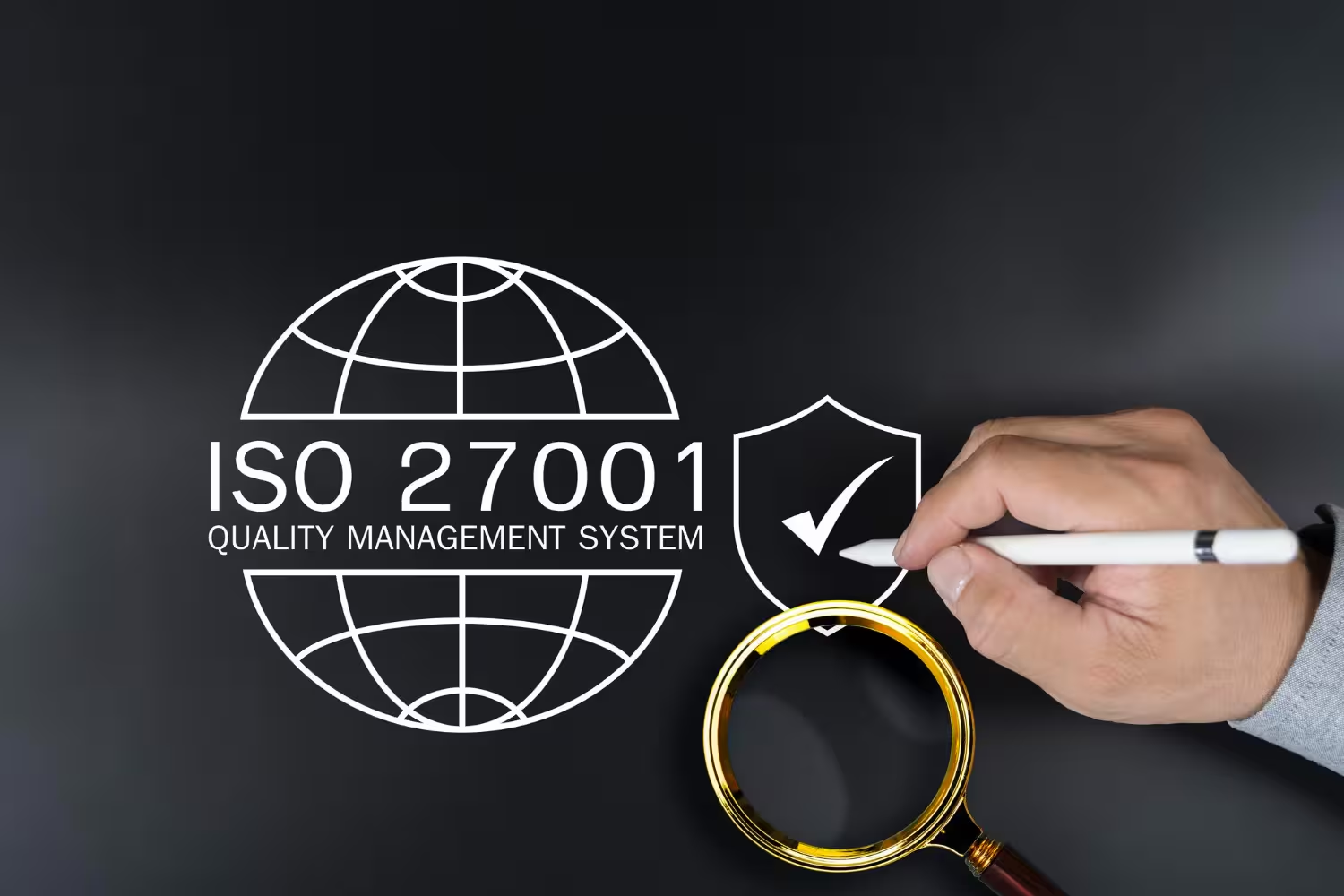The No-Nonsense 6-Step Cybersecurity Risk Assessment Checklist
To identify threats, improve your cybersecurity framework, and master risk management, you should follow a cybersecurity risk assessment checklist. If you don’t have one or aren’t familiar with making a checklist, take a look at our no-nonsense 6-step checklist!

Do you remember work before the internet? We’ve come so attached to technology that most people can’t even fathom what they did during their 9 to 5 before computers became mainstream.
From automating internal processes to adopting cloud services, organizations are constantly embracing changes produced by technology.
On the other hand, technology poses new challenges and threats to your organization. The internet has become an indispensable tool while also becoming an attractive hunting ground for criminals.
Every year, more than 155 million personally identifiable records become exposed in data breaches in the U.S. alone.

In 2019, the number of cybercrime incidents surpassed 31,000 cases worldwide. In the same year, the global number of data breaches with confirmed data loss rose to almost 4,000.
The average cost of data breaches reaches new highs every year. The new current estimate tops more than $8.5 million and U.S. companies are the most targeted organizations of cyber attacks.
Because data breaches are so costly and U.S. companies have a target on their back, is your cybersecurity up to par?
If you don’t know the answer, that’s ok. That’s why, as an organization, you need to follow a cybersecurity risk assessment checklist. Your sensitive data is likely already facing threats and vulnerabilities, so you must identify those and fix them before a breach happens.
To identify threats, improve your cybersecurity framework, and master risk management, you should follow a cybersecurity risk assessment checklist. If you don’t have one or aren’t familiar with making a checklist, we provided one for you below.
Why Have a Risk Assessment?
Risk assessments exist to identify, estimate, and prioritize risks to organizational operations and assets. These risks result from the operation and use of information systems.
Risk assessments are a business concept. It's all about money and how to avoid losing it. You first have to think about how your organization makes money, how employees and assets affect profitability, and what risks could result in monetary losses.
Once you identify all of these things, you should think about how to enhance your IT infrastructure. This will reduce the risks that could lead to a loss for your organization.
Basic risk assessments boil down to only three factors:
- The importance of the asset at risk
- How critical the threat is
- How vulnerable the system is to that threat
By using these factors, you can assess the risk and calculate the likelihood of money lost by your organization. Although risk assessments are about logical constructs, not numbers, you can think of it in terms of this formula:
Risk = Asset * Threat * Vulnerability
Remember that anything times zero is still zero. This means that if the threat factor is high, and the vulnerability level is high, but the asset importance is not worth anything to you, your risk of losing money is very low.

There are multiple ways of collecting information you need to conduct the risk assessment.
For instance, you can…
- Interview management, data owners, and other employees
- Analyze your systems and infrastructure
- Review documentation
A Simple Six-Step Risk Assessment
Step 1: Audit of Assets
Before getting too far into your cyber risk assessment, you need to look at your assets. Focus on key assets for an effective audit.
Find all the valuable assets across the organization. Pay close attention to those threats that can harm, resulting in monetary loss.

Some examples of assets include…
- Servers
- Website
- Partner documents
- Client contact information
- Trade secrets
- Customer credit card data
- Personally identifiable data (PII)
- Protect health data (PHI)
When assessing the assets you have, collect all supporting information and data regarding those assets.
Step 2: Identify Potential Consequences
Once you’ve gathered information on all your assets, you need to identify the potential consequences of that data going missing, getting stolen, or leaking to the public.

Determine what financial losses the business would suffer if any of the assets you identified got damaged. Some consequences you might look for are data loss, system or application downtime, or legal ramifications.
Step 3: Identify Threat Sources and Threat Events
You must identify potential threats and their respective sources. A threat is anything or anyone that might exploit a vulnerability, breach your security, and cause harm to your organization.
A threat isn’t limited to just cybersecurity threats either. You need to look at the big picture.
Common threats to look for include…
- Natural disasters
- System failure
- Accidental human interference
- Malicious human actions
- This includes phishing attacks, data leaks, insider threats, etc.
Step 4: Identify Vulnerabilities and Assess The Likelihood
Once you’ve identified the threats, you need to think like a threat. That sounds redundant…let me explain.
If you were a malicious individual trying to exploit your organization, what would you try and target or exploit to accomplish your malicious agenda? Identify the respective vulnerabilities in your system that could pose a threat like the ones mentioned above.

But what is a vulnerability?
It’s a weakness that allows some threats to breach your security and cause harm to your organization. It is anything that could jeopardize the security of an asset. Vulnerabilities can be physical, non-physical, or human.
Examples of vulnerabilities include…
- Untrained staff
- Careless employees
- Outdated technology with underlying vulnerabilities
- Unpatched software
- Provided excess access control
Ask yourself, “if the threat occurs, what are the chances it will damage this asset?”
Next, pinpoint vulnerabilities and prioritize them through…
- Audit reports
- Vendor data
- Software security analysis
- Vulnerability analysis
Step 5: Assess Risk and Proability Impact
Risk is the potential that a given threat can and will exploit a vulnerability to harm an asset. Determining the likelihood of exploitation is crucial to your cybersecurity risk assessment.
Assess the risk in a logical formula and assign it a value of “high”, “moderate”, or “low”.
Once you label everything, you need to identify the potential repercussions and impact of each respective threat. Then, combine the likelihood and impact values to determine the final risk value. This will tell you which areas to fix and improve first.
If you already have some measures in place, this is the time to think of possible solutions to improve security.
Step 6: Fix, Patch and Secure
This is the final step in your cybersecurity risk assessment checklist. At this point, you identified your assets, risks and threats, vulnerabilities, and potential impact. Now you need to implement new security measures!
This is the point in time when you fix your vulnerabilities and weak points to minimize threats. You can automate where possible to make scaling these fixes easier.

Also, make routine checks to see if any new threats arise and if your current fixes are still effective.
Conclusion
It takes an average of 287 days to identify and contain a breach. This is an extremely costly period when considering a breach’s average cost is $4.87 million.
You need to ensure your business isn’t taking unnecessary risks. That’s why you need to follow a cybersecurity risk assessment checklist like the one above regularly.
But a checklist alone isn’t going to protect your organization. The biggest threat to any business is human error. That’s why you need to train your employees on cybersecurity safety and best practices in addition to implementing patches.
If you are looking for cybersecurity training so you can avoid undue risk, reach out to Etacitcs or click here. If you want to learn more about our training offerings, click here.
Emphasize your product's unique features or benefits to differentiate it from competitors
In nec dictum adipiscing pharetra enim etiam scelerisque dolor purus ipsum egestas cursus vulputate arcu egestas ut eu sed mollis consectetur mattis pharetra curabitur et maecenas in mattis fames consectetur ipsum quis risus mauris aliquam ornare nisl purus at ipsum nulla accumsan consectetur vestibulum suspendisse aliquam condimentum scelerisque lacinia pellentesque vestibulum condimentum turpis ligula pharetra dictum sapien facilisis sapien at sagittis et cursus congue.
- Pharetra curabitur et maecenas in mattis fames consectetur ipsum quis risus.
- Justo urna nisi auctor consequat consectetur dolor lectus blandit.
- Eget egestas volutpat lacinia vestibulum vitae mattis hendrerit.
- Ornare elit odio tellus orci bibendum dictum id sem congue enim amet diam.
Incorporate statistics or specific numbers to highlight the effectiveness or popularity of your offering
Convallis pellentesque ullamcorper sapien sed tristique fermentum proin amet quam tincidunt feugiat vitae neque quisque odio ut pellentesque ac mauris eget lectus. Pretium arcu turpis lacus sapien sit at eu sapien duis magna nunc nibh nam non ut nibh ultrices ultrices elementum egestas enim nisl sed cursus pellentesque sit dignissim enim euismod sit et convallis sed pelis viverra quam at nisl sit pharetra enim nisl nec vestibulum posuere in volutpat sed blandit neque risus.

Use time-sensitive language to encourage immediate action, such as "Limited Time Offer
Feugiat vitae neque quisque odio ut pellentesque ac mauris eget lectus. Pretium arcu turpis lacus sapien sit at eu sapien duis magna nunc nibh nam non ut nibh ultrices ultrices elementum egestas enim nisl sed cursus pellentesque sit dignissim enim euismod sit et convallis sed pelis viverra quam at nisl sit pharetra enim nisl nec vestibulum posuere in volutpat sed blandit neque risus.
- Pharetra curabitur et maecenas in mattis fames consectetur ipsum quis risus.
- Justo urna nisi auctor consequat consectetur dolor lectus blandit.
- Eget egestas volutpat lacinia vestibulum vitae mattis hendrerit.
- Ornare elit odio tellus orci bibendum dictum id sem congue enim amet diam.
Address customer pain points directly by showing how your product solves their problems
Feugiat vitae neque quisque odio ut pellentesque ac mauris eget lectus. Pretium arcu turpis lacus sapien sit at eu sapien duis magna nunc nibh nam non ut nibh ultrices ultrices elementum egestas enim nisl sed cursus pellentesque sit dignissim enim euismod sit et convallis sed pelis viverra quam at nisl sit pharetra enim nisl nec vestibulum posuere in volutpat sed blandit neque risus.
Vel etiam vel amet aenean eget in habitasse nunc duis tellus sem turpis risus aliquam ac volutpat tellus eu faucibus ullamcorper.
Tailor titles to your ideal customer segment using phrases like "Designed for Busy Professionals
Sed pretium id nibh id sit felis vitae volutpat volutpat adipiscing at sodales neque lectus mi phasellus commodo at elit suspendisse ornare faucibus lectus purus viverra in nec aliquet commodo et sed sed nisi tempor mi pellentesque arcu viverra pretium duis enim vulputate dignissim etiam ultrices vitae neque urna proin nibh diam turpis augue lacus.




